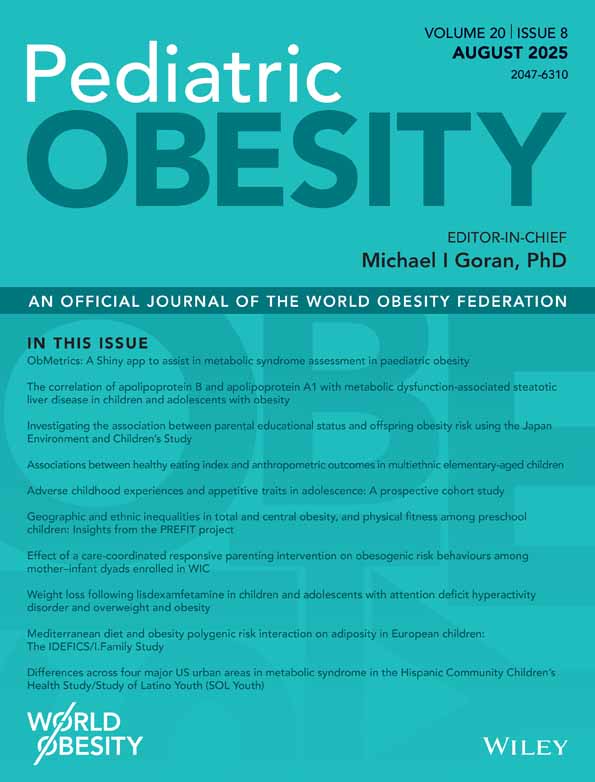Weight loss following lisdexamfetamine in children and adolescents with attention deficit hyperactivity disorder and overweight and obesity
Mostafa Salama and Kaitlin Leopold contributed equally to this work.
Summary
Objective
To examine change in weight status following initiation of lisdexamfetamine in children with attention deficit hyperactivity disorder (ADHD) and overweight or obesity.
Study Design
A retrospective chart review included children aged 2 to <18 years treated with lisdexamfetamine for ADHD. Body mass index (BMI) data for up to 2 years after initiation of lisdexamfetamine were analysed using linear mixed effects models with autoregressive-1 correlation structure on time of follow-up per patient.
Results
The analysis included 330 children ≤18 years, median age 10 years (interquartile range 8.1–13) comprising 55 children with severe obesity, 88 with mild-moderate obesity, 131 with overweight and 56 with healthy weight, 68% male and 32% female. At 2 years after initiation of lisdexamfetamine in the severe obesity group, the BMI Z-score decreased by −0.41 (95% confidence intervals [CI] [−0.57, −0.25], p < 0.001) and BMI percent of the 95th percentile decreased by −11.2% (95% CI [−15.8 to −6.7], p < 0.001). In the mild–moderate obesity group, BMI Z-score decreased by −0.44 (95% CI [−0.56, −0.31], p < 0.001) and BMI% of the 95th percentile decreased by −11.1% at 24 months (95% CI [−13.9 to −8.4], p < 0.001). In the mild–moderate obesity and overweight groups, younger children (ages 4–10) showed greater reduction in their BMI (p < 0.001 and p = 0.029, respectively).
Conclusion
Reduction in BMI for age was noted for up to 2 years following initiation of lisdexamfetamine in children with ADHD and overweight and obesity. Further studies are warranted to study the weight loss effect of lisdexamfetamine in children with obesity.
CONFLICT OF INTEREST STATEMENT
Seema Kumar is a clinical trial investigator for Rhythm Pharmaceuticals. However, none of the authors have any conflicts pertinent to the current manuscript. All other authors do not have any conflicts of interest pertinent to the manuscript to disclose. The study abstract was accepted for poster presentation at the 2024 Paediatric Endocrine Society Annual Meeting.
Open Research
DATA AVAILABILITY STATEMENT
Original data generated and analysed during this study and are available upon reasonable request.




